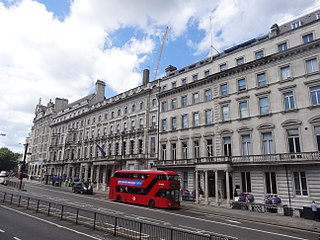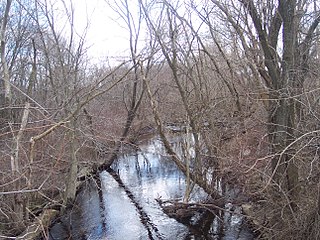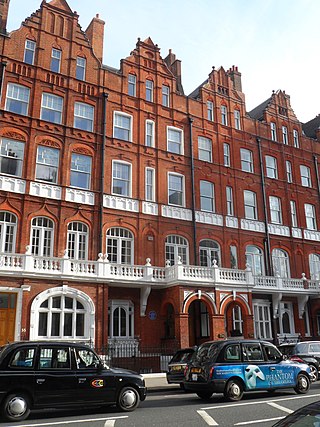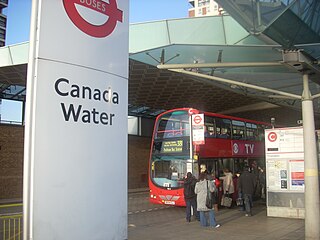Related Research Articles

Dr Challoner's Grammar School is a selective grammar school for boys, with a co-educational Sixth Form, in Amersham, Buckinghamshire, England. It was given academy status in January 2011.

The Douay–Rheims Bible, also known as the Douay–Rheims Version, Rheims–Douai Bible or Douai Bible, and abbreviated as D–R, DRB, and DRV, is a translation of the Bible from the Latin Vulgate into English made by members of the English College, Douai, in the service of the Catholic Church. The New Testament portion was published in Reims, France, in 1582, in one volume with extensive commentary and notes. The Old Testament portion was published in two volumes twenty-seven years later in 1609 and 1610 by the University of Douai. The first volume, covering Genesis to Job, was published in 1609; the second, covering the Book of Psalms to 2 Maccabees plus the three apocryphal books of the Vulgate appendix following the Old Testament, was published in 1610. Marginal notes took up the bulk of the volumes and offered insights on issues of translation, and on the Hebrew and Greek source texts of the Vulgate.

Chelsea Arts Club is a private members' club at 143 Old Church Street in Chelsea, London with a membership of over 4,000, including artists, sculptors, architects, writers, designers, actors, musicians, photographers, and filmmakers. The club was established on 15 November 1890, as a rival to the older Arts Club in Mayfair, on the instigation of the artist James Abbott McNeill Whistler, who had been a member of the older club.

Richard Challoner was an English Catholic prelate who served as Vicar Apostolic of the London District during the greater part of the 18th century, and as Titular Bishop of Doberus. In 1738, he published a revision of the Douay–Rheims Bible.

The Royal Air Force Club, or RAF Club in short-form, is a club located at 128 Piccadilly, London.

St Edmund's College is a coeducational private day and boarding school in the British public school tradition, set in 440 acres (1.8 km2) in Ware, Hertfordshire. Founded in 1568 as a seminary, then a boys' school, it is the oldest continuously operating and oldest post-Reformation Catholic school in the country. Today it caters for boys and girls aged 3 to 18.

Horsemonger Lane Gaol was a prison close to present-day Newington Causeway in Southwark, south London. Built at the end of the 18th century, it was in use until 1878.

Arthur "Francis" Bell, OFM was an English Franciscan friar. He was found guilty of being a Catholic priest by a court sitting under the auspices of Parliament during the English Civil War. He was executed at Tyburn in London. Bell was beatified by Pope John Paul II on 22 November 1987.

South Ham is a district and ward of Basingstoke, to the west of the town centre.

The Peters River is a river in the U.S. states of Massachusetts and Rhode Island. It flows 7.0 miles (11.3 km).

Pont Street is a fashionable street in the Royal Borough of Kensington and Chelsea, London, traversing the areas of Knightsbridge and Belgravia. The street is not far from the Knightsbridge department store Harrods to its north-west. The street crosses Sloane Street in the middle, with Beauchamp Place to the west and Cadogan Place, and Chesham Place, to the east, eventually leading to Belgrave Square. On the west side, Hans Place leads off the street to the north and Cadogan Square to the south.

The Anglo-Belgian Club was a private members' club located in Northumberland Avenue, London.
Bishop Challoner Catholic College is a Roman Catholic secondary school in the Kings Heath area of Birmingham, England. The school has a roll of 1,152 students, including 212 sixth form students.
The Junior Constitutional Club was a political London gentlemen's club founded in 1887, and located at 101 Piccadilly. It was aligned to the Conservative party, with members having to pledge support. Heavy over-subscription for the Constitutional Club which had opened in 1883 led to the creation of a further mass-membership Conservative club.

The City of London Club was established in 1832 and is the oldest of the gentlemen's clubs based in the City of London. Its Italian Palladian-style building was designed by English architect Philip Hardwick. Prince Philip, Duke of Edinburgh, was its royal patron.

Canada Water bus station serves the Rotherhithe area of the London Borough of Southwark, London, England. The station is owned and maintained by Transport for London.
The Sardinian Embassy Chapel was an important Catholic church and embassy chapel attached to the Embassy of the Kingdom of Sardinia in the Lincoln's Inn area of London. It was demolished in 1909.

The Convent of Poor Clares at Gravelines in the Spanish Netherlands, now northern France, was a community of English nuns of the Order of St. Clare, commonly called "Poor Clares", which was founded in 1607 by Mary Ward. The order of Poor Clares was founded in 1212 by Saint Clare of Assisi as the Second Order of the Franciscan movement. It is an enclosed religious order which follows an austere lifestyle. After the Reformation and its consequence, the Dissolution of the Monasteries between 1536 and 1541 by Henry VIII, the only opportunity for recusant English women to enter religious life was to leave the country and join a community overseas.

Beauchamp Place is a fashionable shopping street in the Knightsbridge district of London. Previously known as Grove Place until 1885, it has since evolved into a well-known shopping street.

Twickenham Park was an estate in Twickenham in south-west London.
References
- ↑ Challoner Club has doubled membership, Catholic Herald
- ↑ In re Challoner Club Archived 19 May 2006 at the Wayback Machine , Times Newspaper
- ↑ The History of Heraldry
51°29′52″N0°09′45″W / 51.4977°N 0.1625°W